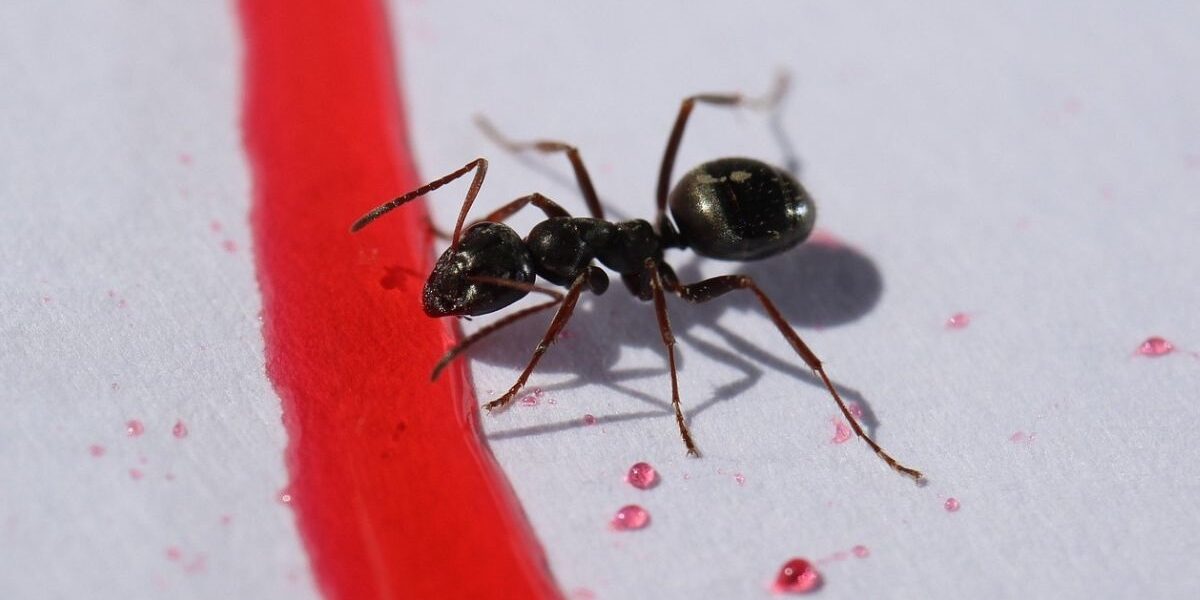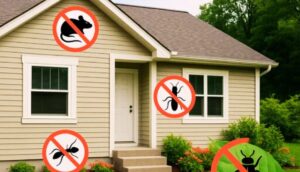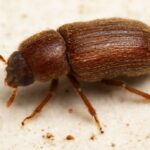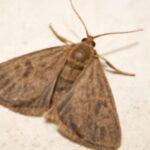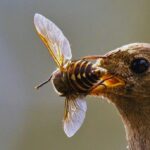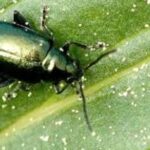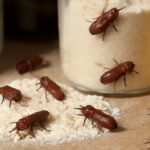Odorous House Ants Control
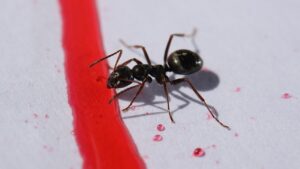
Odorous ants are a common house pest that is especially active during the spring and summer months. They can be seen in trails marching throughout the kitchen areas. Odorous ants get their name from a strong, strange odor, like rotten coconut or blue cheese, that they produce when stepped on or squashed. These ants are also known as sugar ants because they prefer sugary foods. Their natural habitat includes swamps, beaches, under logs, loose tree bark, rocks, mulch, leaf litter, outdoors in soil, and bogs; however, they are most notable for their tendency to invade properties.
Odorous Ants Identification
Odorous ants are tiny, measuring just 3 mm long, and range from dark brown to black.
Where Do Odorous Ants Hang Out
If you suspect that odorous ants have invaded your home, here are hot spots to investigate.
- Water pipes.
- Behind paneling.
- Near heaters.
- Under carpets.
- Nesting in wall crevices or voids near plumbing.
- attics.
- Insulation.
- Under sinks.
- Around toilets
- Around kitchen appliances.
Natural Methods to Control Odorous Ants
Make sure to take care of these issues to discourage the presence of odorous ants.
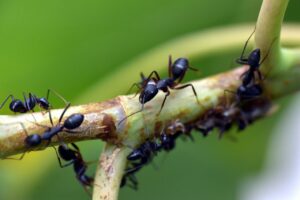
- Eliminate food sources- clean food particles from kitchen areas and other areas of the home where foods are not only prepared but also consumed. Inspect and clean your kitchen pantry as well. Make sure to clean up all water spills, including tea, soda, coffee, and other sweet drinks.
- Keep the stove top clean and free of grease.
- Don’t leave dirty dishes in the kitchen sink overnight; wash them immediately after use.
- Store dry foods in air-tight containers.
- Make sure that pet food packages are tightly sealed.
- When pets finish eating clean their bowls.
- Indoor trash containers should be in good repair with tight-fitted lids.
- Empty trash containers regularly.
- Repair leaky pipes both indoors and outdoors.
- Any containers collecting water including plant pot saucers both out and indoors should be kept empty, this will discourage the presence of pests, for example, ants, rats, mice, roaches, and mosquitoes.
- Trees and shrubs that are making contact with the home should be trimmed back to about 2-3 ft. Ants, rodents, and other pests will use the branches of trees and shrubs as a bridge to get onto your home’s foundation and then seek an entry point indoors.
Odorous Ants Nesting Sites
- The key to controlling odorous house ants is to locate their nesting site, which can be done by following ants forging trails. These trails will lead to the nesting site. Start treating odorous ants with ReClaim IT, ReClaim IT will not only take care of odorous ants but also other insect pests as well. Spray ants nest and activity in flower beds, patios, around rock beds, and in mulch beds. Use this product as a barrier treatment, apply 3 ft up the structure of your home and 3 ft out.
- Spray ReClaim IT around doors and windows. D-Fense Dust is an insecticide that controls various insects in wall voids, with the help of a duster D-Fense Dust can be applied to wall voids, where pipes enter the home, under appliances, and weep holes.
- For indoors, apply Advion ant gel bait or Ant-Trax ant gel bait, these sweet gel baits will attract odorous ants, apply a pea size application of gel baits where ant activity is common Such as in your kitchen, near appliances, near entry points, and baseboards. However before gel bait applications make sure to remove competing food sources and store them in air-tight containers, any food particles should be swept up also. The removal of pet food is also very important for gel bait to be effective.
Seal All Entry Points
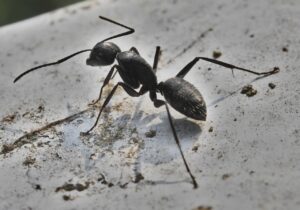
The presence of house ants can become a nuisance, and finding where they may be nesting indoors will help to bring control, here are several common places house ants have been known to congregate.
- In Cracks and crevices behind kitchen pantries and cabinets.
- Ants are known to build nests behind wallpaper.
- Underfloor boards can be a nesting site.
- Under or behind appliances, for example, laundry machines, dryers, dishwashers, ovens, refrigerators.
- Check under the sink cabinet.
How to Prevent Odorous Ants
The following steps must be implemented to keep odorous ants away.
- Ensure, at all times, to sweep or vacuum to remove food particles.
- Make sure that stove tops and kitchen countertops are cleaned after use.
- Wash dishes immediately after use.
- Clean up water spills, including tea, sodas, and other drinks.
- Keep your yard clean by the removal of yard debris.
- Continue to trim vegetation so it doesn’t make contact with your home or building structure.
- Every 3 months, apply ReClaim IT as you did in the first applications as a barrier treatment to continue to control odorous ants.
Conclusion
Protect your home from odorous ants by following this simple yet effective guide. These proven steps will not only discourage odorous ants but also other insect pests, including rats and mice. Don’t allow pests to take over your home, but strike back with this win-win solution that will go to work for you.

